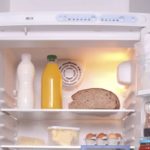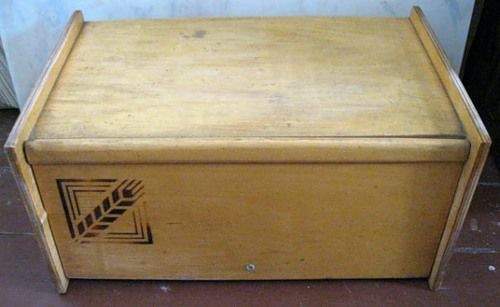Is it possible to store bread in a plastic bread bin?
Plastic products surround us everywhere: these are goods for the home and garden, accessories for cars and children's toys. Plastic has become such a part of our lives that we take it for granted without thinking about the consequences.
The content of the article
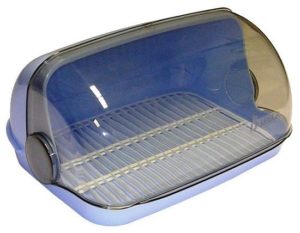
However, in certain situations it is worth looking a little beyond mere convenience. For example, when buying a bread box. We will tell you in this article whether you should trust plastic for storing bakery products or whether it is better to refrain from such a purchase.
What's wrong with bread in a plastic bread bin?
Bright, smooth, easy-to-clean plastic bread bins are often perceived by housewives as convenient and practical utensils. However, behind the ease and external attractiveness there is often a real threat to health. Such popular and widespread plastic contains toxic compounds. As they stand out, they literally permeate the food. Bread stored in plastic containers becomes a “silent enemy” for all family members.
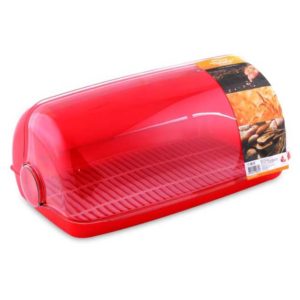 The most common plastic toxins are Phthalate and Bisphenol-A. It is thanks to them that the products become smooth and durable. These toxins have a complex effect on the human body, simultaneously affecting different organ systems.
The most common plastic toxins are Phthalate and Bisphenol-A. It is thanks to them that the products become smooth and durable. These toxins have a complex effect on the human body, simultaneously affecting different organ systems.
- Immunity weakens, resistance to viral and infectious diseases decreases.
- The risk of developing cardiovascular diseases increases significantly.
- Blood quality deteriorates.
- Irreversible changes occur in brain tissue.
- The likelihood of developing diabetes mellitus increases.
- There is a hormonal imbalance.
- Due to carcinogenic activity, the risk of development and growth of cancer cells increases.
These are the disappointing results of scientific research. However, you shouldn’t go to extremes by trying to get rid of everything made of plastic. In some situations, it may be enough to be aware and minimize risks.
Rules for storing bread in plastic and plastic
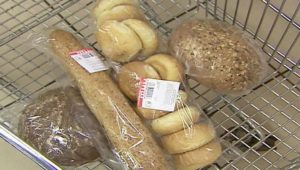 Most store-bought baked goods contain yeast. This means that rolls, bread and loaves are prone to mold. Heat and tightness contribute to this process.
Most store-bought baked goods contain yeast. This means that rolls, bread and loaves are prone to mold. Heat and tightness contribute to this process.
To maintain the freshness of food and reduce the negative impact of plastic containers, it is important to follow simple recommendations:
- If the supply of bread is enough for several days, leave for the bread bin only the amount that you can eat today. Put the rest in the refrigerator. Due to low temperatures, mold fungi will not be able to reproduce. The products will retain their taste.
- When placing the bread in a plastic container, cover it with a cotton napkin: in this case, the interaction between the rolls and the plastic will be minimal. But under no circumstances put the products in a bag. Firstly, the bread will simply “suffocate”.Secondly, polyethylene is the same plastic: if in the refrigerator it does not in any way affect the taste and composition of bread, then at room temperature such close proximity to food will not bring anything good.
- Place the plastic bread bin away from heating appliances. It is extremely important to protect the container from exposure to direct sunlight. Otherwise, you'll end up with a nuclear mixture of toxic plastics, heat, and mold-prone foods. There can be no question of either safety or quality of bread in such conditions. The ideal place for a bread bin is dark, dry and cool.
ADVICE. Experienced housewives claim that if you put fresh bread in a plastic bag in the freezer, then after defrosting it will be so fragrant and tender. It takes about two hours for the products to recover from the cold.
Plastic bread box: pros and cons
To summarize, we can draw conclusions about the advantages and disadvantages of plastic bread bins.
The obvious advantages include:
- light weight;
- easy care;
- external attractiveness.
Unfortunately, there are no fewer shortcomings. And they clearly outweigh the pros.
- Threat to family health. Of course, a short exposure will not make a significant difference. But if you add up minutes into hours that become years, the harm from a plastic breadbox no longer seems trivial. Just as water wears away stone, plastic penetrates the human body, disrupting its normal functioning. This sounds especially true for those who have children.
- Specific operating conditions. You can and should follow the precautions described above. And yet it is not entirely convenient to be constantly on guard.Good old wood, for example, does not create such problems and is more trustworthy - if only because it is a natural material.
- Another “drop in the ocean”. We are surrounded by plastic on all sides and inhale its harmful fumes every minute. It would seem that this is just a bread box, which does not stand out much against the general background. But any vessel is filled once - and there is simply no room for the last drop. We cannot completely avoid interaction with plastic. But we can, if possible, reduce its amount in the space around us.
The modern world often presents us with a choice, passing off danger as sweet candy. Knowing the facts makes it easier to resist threats. And even if the choice in favor of natural materials seems insignificant at the moment. But it is precisely these little things that make up a full, healthy life.

